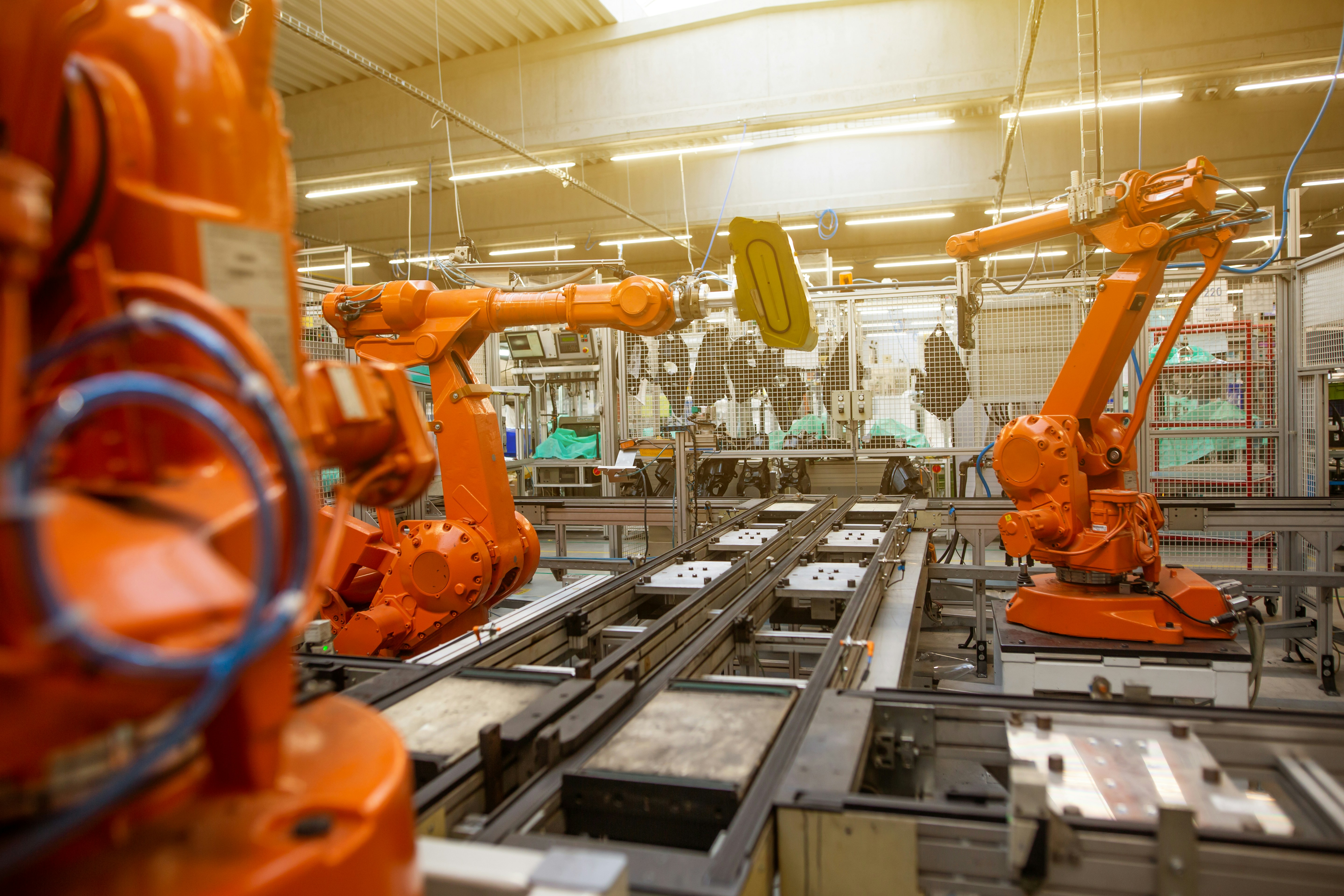
Australian manufacturing is undergoing a high-tech renaissance. In fact, a recent Deloitte study found over 70% of manufacturers have integrated data analytics and cloud computing into their processes, and nearly half are using IoT sensors and devices on the factory floor. Consider Visy, a major packaging producer: it outfitted its facilities with IoT sensors to monitor machine health and energy usage in real time, significantly reducing downtime and energy consumption. Examples like this show the Industry 4.0 revolution in Australia is well underway, smart robots, remote monitoring, and cloud-connected equipment are boosting productivity and quality as never before. But with great digital innovation comes a new challenge: ensuring these connected operations stay secure. The more our factories resemble data centers with robotic arms, the more we must confront the hidden operational risks that come along for the ride.
Linking machines to networks has a flipside: it puts manufacturing firms squarely in cybercriminals’ crosshairs. Manufacturing is now the #1-targeted industry for cyber attacks, including ransomware, for four years running. Why do hackers love to hit factories? Simple, manufacturers are data-rich and downtime-sensitive.
A ransomware attack that locks up production data can bring an assembly line to a standstill, pressuring companies to pay up. In one study over half of manufacturing companies surveyed had been targeted by ransomware, and in nearly 70% of those attacks the criminals succeeded in encrypting data. The Australian Cyber Security Centre (ACSC) reports a cybercrime incident about every six minutes, with an average cost of A$56,600 per incident for small businesses, a 14% rise on the previous year. In other words, a single breach can hit an SME’s bottom line hard. What’s at stake is not just a few computers, but entire production runs and supply chains. Attacks have caused halted production lines, missed shipments, and stolen intellectual property, all of which erode hard-won trust with customers and suppliers. The disruption and downtime alone are incredibly costly, analysts note unplanned manufacturing outages can cost up to $260,000 per hour. Beyond the immediate losses, there’s also compliance risk: compromised customer or supplier data can trigger regulatory penalties and legal fallout. In short, smart factories need smart security. Digital transformation without robust operational technology protection can turn a groundbreaking innovation into a major liability overnight.
Walk into a modern plant and you might not see dusty servers in the corner, instead, you’ll find devices streaming data to the cloud. Cloud platforms now act as the central nervous system of many operations. They host maintenance logs, asset tracking systems, and real-time production analytics dashboards accessible from anywhere. For example, IoT-driven solutions are leveraging cloud computing to revolutionise maintenance: Australia’s GreaseBoss project uses wireless sensors plus

cloud-based AI analytics to automate heavy machinery greasing and provide live dashboard updates to site managers. The payoff is fewer breakdowns and smarter upkeep. Embracing cloud infrastructure brings obvious benefits: infinite scalability, faster software updates, and remote control of far-flung sites. A plant manager in Sydney can instantly check on a production line in Perth via a cloud dashboard, or even adjust operations via a mobile app. However, handing the keys of your operations to the cloud isn’t without trade-offs. Latency can be a concern, critical control decisions can’t always wait for data to travel to a distant cloud server and back. That’s why many manufacturers mix in edge computing for ultra-fast responses on the shop floor. Security is another trade-off: connecting industrial systems to cloud networks expands the attack surface, demanding vigilant IoT security practices. And reliance on one cloud platform can introduce a single point of failure, if your cloud service or internet connection goes down, it could interrupt production. Still, the advantages often outweigh the risks when managed correctly. Cloud-centric operations let manufacturers scale rapidly and analyse data in ways that weren’t possible before. Put simply, the cloud is no longer just a server room, it’s become the production supervisor overseeing factory operations. The key is to harness its power while mitigating the new risks it brings.
How Resilient Manufacturers Stay Online
Forward-thinking manufacturers aren’t choosing between innovation and safety, they’re investing in both. Building a smart, safe factory means planning for continuity and cyber resilience from the ground up. Here are a few practical strategies Australian manufacturers are using to stay online even when trouble strikes:
Inlight IT's Role in Modern Manufacturing
Technology may be transforming manufacturing, but it takes the right expertise to weave all the pieces together securely. This is where Inlight IT partners with Australian small and mid-sized manufacturers to build modern digital factories on strong foundations. We understand the unique challenges manufacturers face in balancing innovation with risk, and offer a suite of services to keep your operations both agile and secure:
Managed Services: Inlight IT’s managed IT services keep your production systems running reliably. We provide 24/7 monitoring, routine patching, and IT support tailored to manufacturing environments. From servers on the shop floor to cloud workloads in Azure, we proactively manage it all to ensure maximum uptime, compliance (e.g. with industry standards and data regulations), and peace of mind. You get a dedicated team that knows your environment and acts before small issues become big outages.
SD-WAN & Network Solutions: For manufacturers with multiple sites, warehouses, or remote operators, Inlight IT delivers rock-solid network connectivity. Our SD-WAN solutions create a secure, high-speed fabric linking all your locations and cloud services. By intelligently managing multiple links (NBN, fiber, 4G/5G), we guarantee stable connections with low latency between your factory floor and the cloud core. The result is real-time data sync across sites and a resilient network that keeps your business connected even if one carrier has an issue.
Application Development: Off-the-shelf software rarely covers every need of a modern factory. Our app development team can build custom software and integrations to connect your disparate systems – whether it’s linking your ERP with IoT sensor data, creating a mobile app for supervisors to check production KPIs on the fly, or designing user-friendly dashboards for your operators. We specialise in developing applications that turn raw factory data into actionable intelligence, so you get more value from your Industry 4.0 investments. The goal is a unified digital ecosystem where all your critical data is at your fingertips.
Cloud Hosting & Infrastructure: Inlight IT helps manufacturers leverage the cloud on their terms. We offer cloud hosting and hybrid infrastructure solutions that provide the agility and scale modern operations demand. Need to expand storage for CAD files or spin up a new analytics server? We can deploy it in the cloud within minutes. Worried about latency for machine controls? We’ll architect a hybrid cloud or edge solution that keeps critical functions on-site and uses cloud power for everything else. Our expertise with leading cloud platforms means you get the performance, scalability, and cost-efficiency without the usual cloud management headaches.
Cybersecurity & Monitoring: Last but not least, Inlight IT fortifies your digital factory against threats. Our cybersecurity services include next-gen firewall and network protection, endpoint protection with EDR, and 24/7 security monitoring. We conduct regular vulnerability assessments and ensure your setup aligns with best practices (such as the ACSC Essential Eight). Through managed detection and response, we keep an eye on your network and OT systems around the clock, ready to respond at the first hint of suspicious activity. By taking a proactive security stance, we help prevent breaches before they happen, and rapidly contain them if they do. From user awareness training to zero-trust architecture design, we make cybersecurity an integrated part of your operational strategy, not an afterthought.
Inlight IT acts as an extension of your team, bringing deep IT and OT expertise to help you innovate confidently. Whether it’s maintaining your IT backbone, linking your sites, building custom apps, migrating to the cloud, or defending against cyber threats, we have you covered. The result is a smarter factory that runs on a strong digital foundation, so you can focus on production and growth, knowing your technology is in safe hands.
Conclusion: Smart Manufacturing Needs Smarter IT
Industry4.0 is unlocking incredible new efficiencies for Australian manufacturers, from cloud analytics that fine-tune quality, to IoT devices that predict maintenance before something breaks. But as we’ve seen, innovation without resilience is a liability. To truly reap the benefits of digital transformation, manufacturers must invest equally in reliability, security, and disaster recovery preparedness. The good news? With the right IT partner and strategies in place, it’s entirely possible to have both – the agile, data-driven factory of the future, and the rock-solid safeguards that keep it running under any circumstances. Future-ready factories are built on strong digital foundations. By fortifying your operations with smarter IT today, you ensure that the clever robots, cloud systems, and AI algorithms will keep singing in harmony on the factory floor tomorrow, no matter what challenges come your way.
Ready to safeguard your business? Inlight IT can Help
Book a consultation with Inlight IT below or explore our Managed IT Services, Cloud Hosting, Backup & DR, and Security solutions


